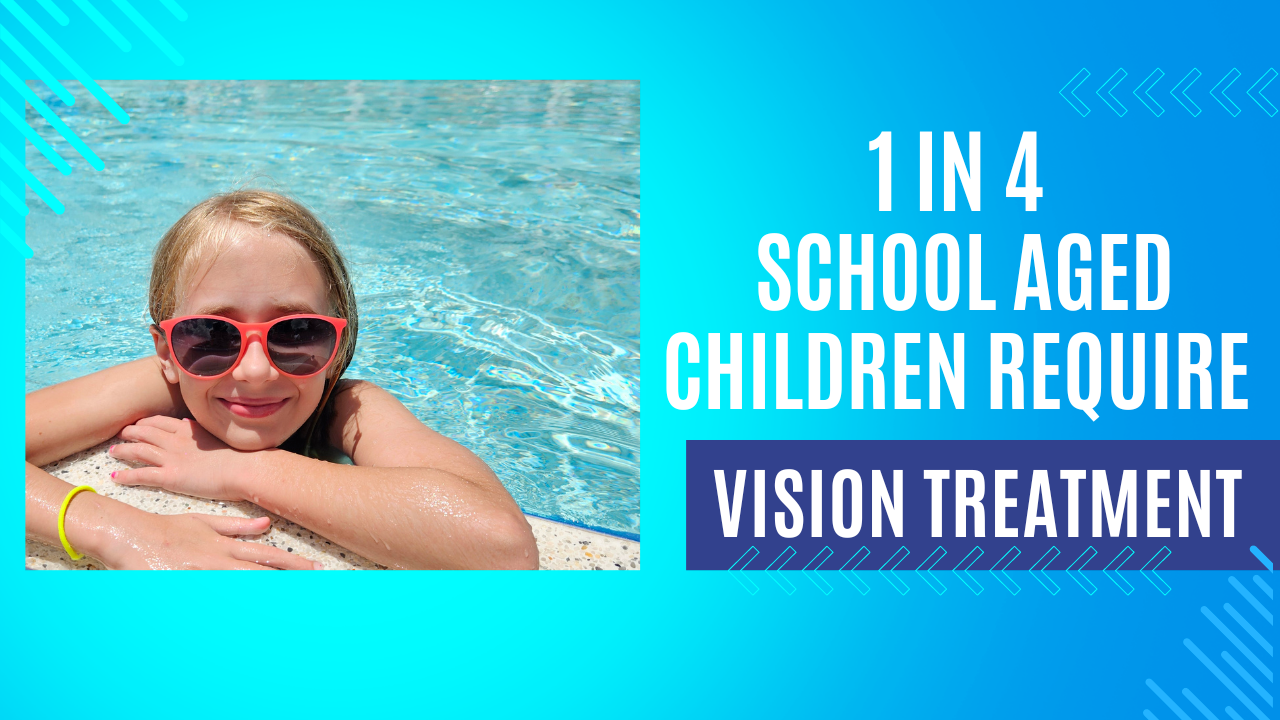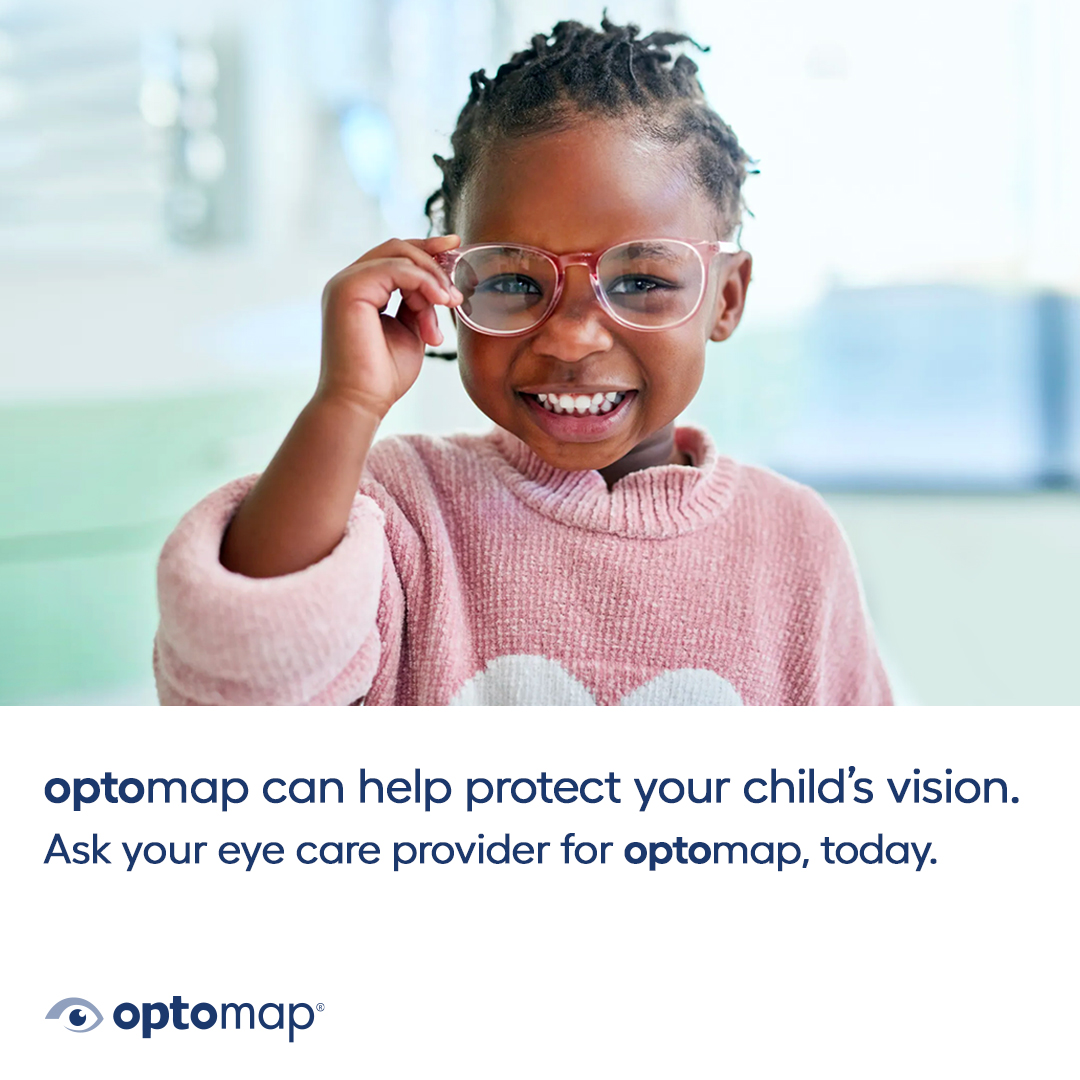Children’s Eye Health and Safety Month
Learning occurs visually so a healthy childhood development depends heavily on the eyes. As babies develop, they rely on the sights and sounds of their environments. Without having the ability to understand or voice vision impairment, early screenings of children 6 months and older are crucial to detect vision problems. 1 in 17 preschoolers and 1 in 4 school age children require vision treatment.1
Look for Signs
A problem such as strabismus (lazy eye) is often easier for a parent to notice then farsightedness, but both require a diagnosis along with a treatment plan. Not being able to follow lessons on a white board or read words in a book is frustrating for children and undetected vision complications often lead to learning challenges, behavioral problems and, in critical cases, vision loss. Help keep kids see clearly, longer.
Symptoms of impairment include squinting, frequent eye rubbing, and the turning of the head in different ways. These signs should be addressed by a doctor immediately versus waiting for an annual assessment. As children grow older, disinterest in reading can be another symptom of complications.
Common vision problem include:
· Myopia - such as myopia, or nearsightedness and misaligned eyes in children 6 months and older.
· Hyperopia – farsightedness
· Astigmatism
· Amblyopia – lazy eye
· Strabismus – crossed eyes
· Ptosis – drooping eyelid
· Color blindness
Instill Healthy Habits Early
Vision slowly deteriorates over time, so teaching children routines that can preserve eyesight is important. Preach the importance of washing hands before touching eyes, and that a cold compress should be used if eyes are itchy; rubbing irritated eyes can cause further injury. Teach children the proper way to handle all sharp objects. Regulate screen time, taking periodic brakes to refocus on distant objects. Require blue light glasses and enforce hats and sunglasses when outside for extended periods of time.
A healthy diet paired with regular exercise can ease stress to lower eye strain. Overall health and wellness reduce the occurrence and/or severity of age-related macular degeneration, diabetic retinopathy, neovascular glaucoma, cataracts and other ailments.2 Antioxidants, leafy greens, vitamin A are only a few nutrients that aide in eye care.3 Sneak these into meals and snacks. Educating children about the importance of nutrition and fitness at an early age will help instill a well-balanced lifestyle for years to come.
Importance of Routine Eye Exams
It's important to understand the importance of routine eye exams, and the utilization of the highest-level technology in pediatric screening. Optos ultra-widefield (UWF™) imaging technology is making great strides in diagnosing and treating eye problems in children and infants. The cutting-edge modalities and ease of operation with an optomap exam may show signs of ocular or systemic disease, often before children and infants become symptomatic.

optomap was founded by Douglas Anderson after his then five-year-old son Leif went blind in one eye when a retinal detachment was detected too late. Although his son was having regular eye exams, routine exams were uncomfortable, especially for a child, which made it impossible for the doctor to conduct a complete exam and view the entire retina. He set out to create a way of non-invasively capturing as much of the retina as possible, resulting in optomap.
An optomap image captures up to 200°, or 82% of the retina in one fast, painless image. The image is highly detailed and allows your eye care professional the best view for identifying diseases and other issues that may arise in your child’s eyes. Set your child up for success by scheduling a comprehensive eye exam with optomap.
1 Facts About Children’s Vision. Children’s Vision Massachusetts
2 How to Improve Your Vision With Physical Exercise, Drew Sutton, MD 2023
312 Foods for Eye Health and Eyesight to Include In Your Diet, verywellhealth 2024